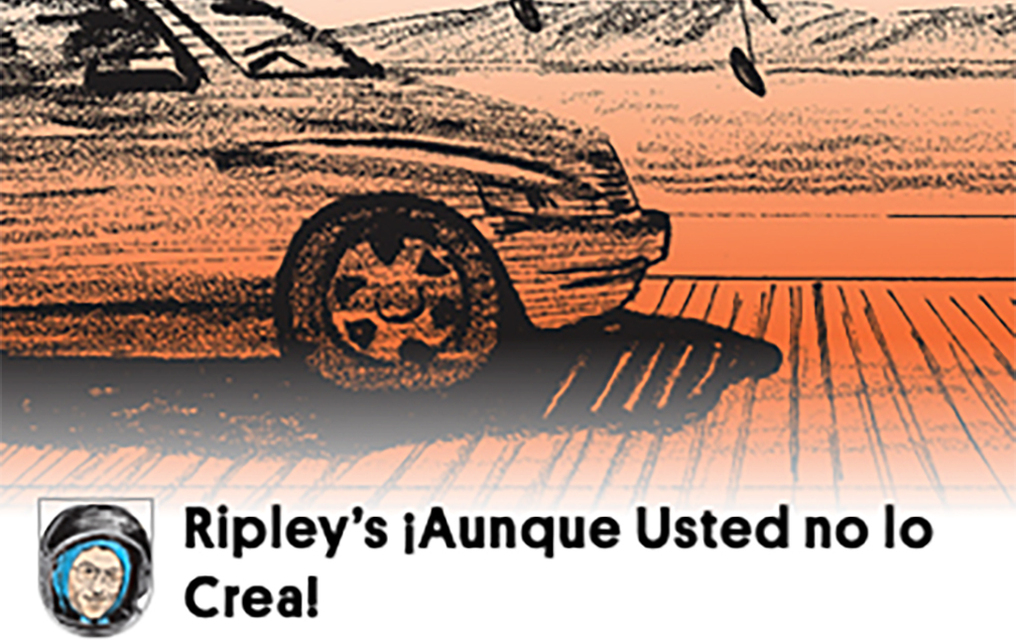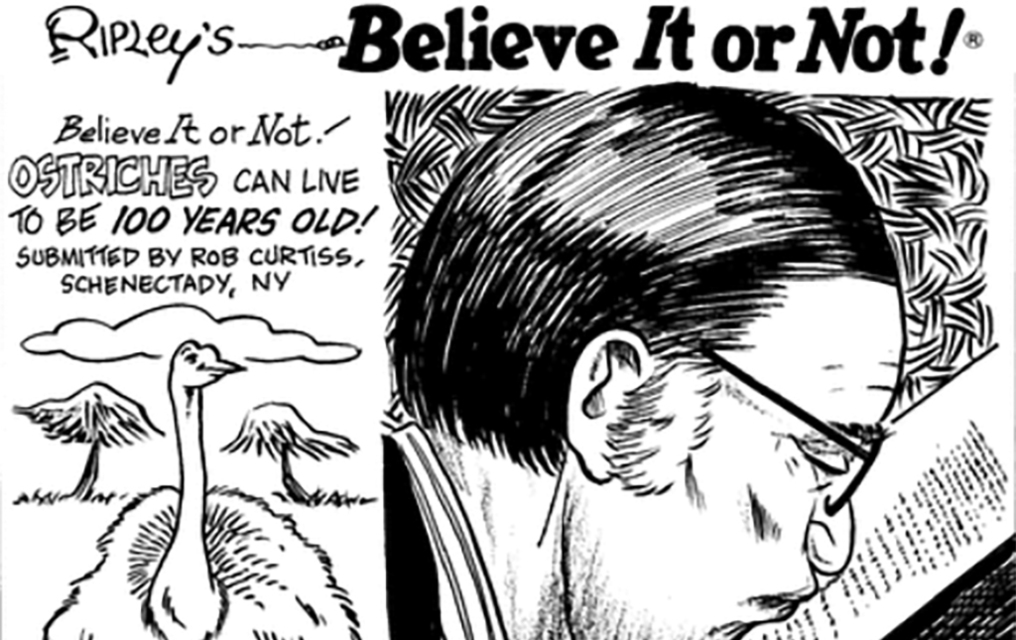Ripley's Believe It or Not by Ripley’s Believe It or Not! for January 11, 2015
Transcript:
The color pink is named after the Dianthus flour, commonly called a pink in the 16th century. During the Great Depression, mothers would make clothes from Calico Feed Sacks, prompting companies to produce Sacks with colorful patterns and removable labels to better help the cause! Cha-ching! A bunch of rare Ruby Roman grapes, grown only in Ishikawa, Japan, can cost more than $5000!






DaJellyBelly over 9 years ago
In the 1960’s there was a feed company near me that still used those types of sacks.
Templo S.U.D. over 9 years ago
I guess the color pink being named after the flower pink is similar to the color orange being named after the fruit orange.
Jerry over 9 years ago
I remember in the 1950’s, my mother would always go with my dad to buy chicken feed, so that she could pick out the sacks for dresses that she wanted to make for herself.
spaced man spliff over 9 years ago
Nice bunch of purples.
MJKesquire over 9 years ago
Is that how the term SACK DRESS started??
Frogman_tg over 9 years ago
Anyone who would pay $5000 for a bunch of grapes have his/her head on crooked. Idiot! Come to think of it I’ve got a bunch of bananas I might let go for the $5 grand.
juicebruce over 9 years ago
Waste not want not.
William Reynolds over 9 years ago
I had a shirt made from a flour sack. Those were the good old days?
Red_Fez over 9 years ago
Ah ha… In Dicken’s Christmas Carol, the charwoman brought the deceased Scrooge’s fine nightshirt in for sale, stating that calico was good enough him.
francisrossi over 9 years ago
There’s a reason the grapes cost so much. They need to meet specific size and sugar percentage requirements to be certified (20g each, 18% sugar, and they’re roughly the size of a table tennis ball). The really expensive ones are the “premium” class, which are 30g per grape and at least 700g for the bunch.
Admittedly they’re designed specifically to be exclusive, but isn’t that the same with fancy clothes and cars? They’re intended for people with more money than sense, not the mass market.
Stephen Gilberg over 9 years ago
Imagine if you discovered you didn’t like the taste of those grapes.
Neo Stryder over 9 years ago
I wonder what was the meaning of “pink” in those days.
Pedmar Premium Member over 9 years ago
Just my luck, I’d get a bunch of those grapes that are sour.
John W Kennedy Premium Member over 9 years ago
There have been a good many English words spelled “pink”, many of them unrelated, with meanings like “a small stab” or “to cut cloth with a special pair of shears that leave a jagged edge that makes it hard for the fabric to unweave”. It’s not clear where the word “pink” (flower; later color) came from.
tuslog64 over 9 years ago
Also, feed sacks (before they went to 50# paper sacks) would be printed with two types of ink – a permanent inkfor the floral design, a washable ink with the brand name that would wash out. Folks have many towelsfrom those sacks.
osurickbee Premium Member over 9 years ago
This reminds me of the Fractured Fairy Tales “Felicia and the Pot of Pinks”!
john over 6 years ago
Thanks to the world-wide economic depression of the 1930’s and the war-time shortages of the 1940’s, children who had any furniture their size often had furniture made from modified orange crates, which were cheaper than pasteboard boxes because of the cost of the machines needed to make pasteboard. The home economic theme of that era was "Use it up, / Wear it out, / Make it do or do without! "
john over 6 years ago
Thanks to the world-wide economic depression of the 1930’s and the war-time shortages of the 1940’s, children who had any furniture their size often had furniture made from modified orange crates, which were cheaper than pasteboard boxes because of the cost of the machines needed to make pasteboard. The home economic theme of that era was "Use it up, / Wear it out, / Make it do or do without! "